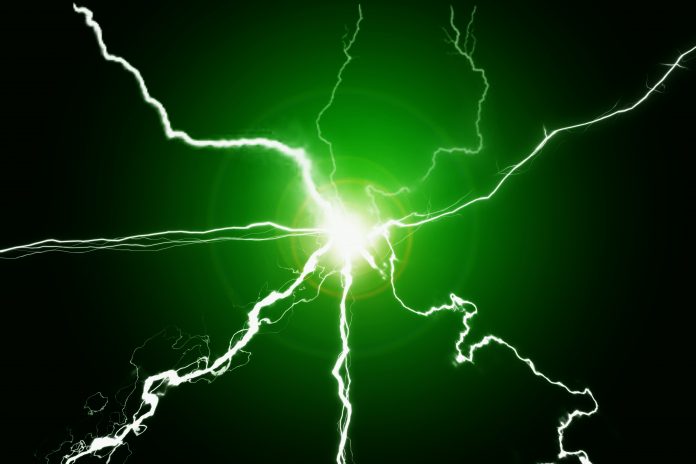Matteo Barbarino, a Nuclear Plasma Fusion Specialist from the International Atomic Energy Agency (IAEA) highlights key papers from the IAEA Fusion Energy Conference (FEC) 2018
This article is Part 4 in a series on the International Atomic Energy Agency (IAEA) Fusion Energy Conference (FEC). Part 1 is here. Part 2 is here. Part 3 is here.
The 28th Fusion Energy Conference (FEC 2020) will take place in Nice, France, next year. Meanwhile, let’s glance through some of the core papers from the FEC 2018 and learn about how they relate to historic developments in fusion energy research.
Overview of First Wendelstein 7-X High-Performance Operation with Island Divertor (OV/4-1)
Wendelstein 7-X (W7-X) at Max Planck Institute for Plasma Physics, leads activities in stellarator fusion science. An alternative to the tokamak as the machine layout, the stellarator is inherently able to operate the plasma in a steady-state and free from disruptive instabilities, but it is technically harder to design.
Although W7-X will not produce energy, its designers hope to prove that such layout is also suitable for application in power plants. The stellarator is, in fact, an integral part of the EU roadmap to a DEMO, which includes a specific mission to bring this line to maturity as a possible long-term alternative fusion power plant concept.
This paper highlighted the recent world record results in stellarator fusion triple product: the density, confinement time and plasma temperature used by researchers to measure the performance of a fusion plasma.
At the FEC 1994, first results of the H-mode in the Wendelstein 7-AS (W7-AS) were presented. This achievement proved the high confinement mode to be a feature throughout all toroidal devices:
WAGNER, F., et al., “Boundary layer and H-mode studies in W7-AS”, Plasma Physics and Controlled Nuclear Fusion Research (Proc. 15th Int. Conf. Seville, 1994, Paper No. CN-60/A4-7) IAEA, Vienna (1995) 559.
Overview of the First Deuterium Experiment in LHD (OV/4-2)
Developed at Kyoto University in the 1970s, LHD is the world’s largest fusion device based on the “heliotron” concept – a magnetic configuration for the confinement of the plasma closer to the stellarator line than the tokamak – and the first-ever fully equipped with superconducting magnet.
Considered one of the ultimate enabling technologies for magnetic confinement fusion energy, superconducting magnets can carry higher current and produce stronger magnetic fields than conventional resistive magnets, while consuming less power and being cheaper to operate, thus enhancing the feasibility and practicality of fusion reactors as an energy source.
All large fusion devices built since the 1990s – including ITER – rely on this superconducting technology for producing the powerful magnetic fields required for plasma confinement and control.
This paper presented world record results from LHD first experiments with Deuterium fuel.
Results from LHD first Hydrogen plasma were presented at the FEC 1998 in home ground:
IIYOSHI, A., et al., “Overview of the Large Helical Device project”, Fusion Energy Conference (Proc. 17th Int. Conf. Yokohama, 1998, Paper No. CN-69/OV1/4) IAEA, Vienna (2001).
Overview of TJ-II Stellarator Results (OV/4-3)
Operating since 1997, TJ-II stellarator is the flagship project of the National Fusion Laboratory of Spain with a research programme that aims to support the stellarator line development as well as ITER and international tokamak research.
This paper presented the most recent results in key areas of fusion plasma physics.
The Spitzer’s stellarator idea goes back to the 2nd United Nations Conference on Peaceful Uses of Atomic Energy in 1958:
SPITZER, L., Jr., “The Stellarator Concept”, Peaceful Uses of Atomic Energy (Proc. 2nd Int. Conf. Geneva, 1958, Paper P/2170) 32 (1958) 181).
ELM and ELM-Control Simulations (OV/4-4)
Edge Localized Modes (ELMs) – plasma instabilities occurring in the edge of plasmas – are a well-known signature of H(high)-mode operation in which energy confinement is improved (double compared to the L(low)-mode).
Although ELMs may allow continuous operation, big ELMs may lead to high heat loads which have the potential to damage components in future fusion machines, including ITER.
Developing a method for ELM mitigation to minimize the energy losses will be essential to achieve plasma regimes of operation for tokamak-based power plant application with high fusion gain.
This paper provided insight into the open questions on ELM physics with regards to future devices and ITER’s operation.
ELMs were first observed in ASDEX in 1982, when H-mode was discovered, and they were first reported at the FEC 1984:
KEILHACKER, M., et al., “Confinement and beta-limit studies in ASDEX H-mode discharges”, Plasma Physics and Controlled Nuclear Fusion Research (Proc. 10th Int. Conf. London, 1984, Paper No. CN-44/A-II-1) IAEA, Vienna (1985) 71.
Progress in Disruption Prevention for ITER (OV/4-5)
Speaking of plasma instabilities, another incredible challenge that scientists and engineers working on tokamaks like ITER must face is developing a system to control disruptions.
This class of instability can suddenly terminate the plasma, ultimately halting power production, and damage key reactor components, causing significant thermal and mechanical stresses to the in-vessel components, the vacuum vessel and the magnet coils.
Fortunately, experiments, theory and modelling seem to come together when trying to predict, mitigate and ultimately avoid disruptions in the first place. Gaining control of this class of instability will be essential for ITER and post-ITER tokamaks.
This paper provided an overview of recent research toward the goal of ITER’s disruption-free operation.
Plasma disruptions were observed from the beginning of tokamak research in the 1960s and back then it was already clear that this phenomenon limited the maximum plasma density, pressure and current in a tokamak:
SPITZER, L., Jr., “Controlled nuclear fusion research, September 1965: Review of experimental results”, Plasma Physics and Controlled Nuclear Fusion Research (Proc. 2nd Int. Conf. Culham, 1965) IAEA, Vienna (1966) 3.











